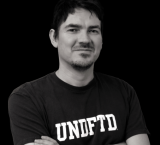Story:
How to Move Sound Beyond a Single Dimensional Discipline
It is no longer enough to simply have a good sounding game. It is no longer enough to be able to produce great sounds, or great music, or great speech. This is the basic starting position that I believe sound has explored for the majority of the 20th century, and from which our industry now has the opportunity to grow. Sound, indeed any discipline, should now be approached from a completely fresh starting point – from day one, as an integral part of the design process. There are no excuses, if this is not how your organization is set up, then it is up to you to start the process as soon as you possibly can.
Applying 'design thinking' to sound design as an approach for any problem is the beginning of unlocking new ground here.
In the 21st century the sound artist, no matter what kinds of game or product they are working on, is to be a true multidimensional problem solver and innovator. This imperative is everywhere we look today, the primary thrust of technology is to enable collaboration, enable visibility and transparency, clearly it is trying to fix something that is broken.
With mixing, it is no longer enough to simply mix a game, the final physical acts of moving faders is when the opportunities for mix decisions are almost all closed off - in order to truly influence mix decisions, to nurture mix moments and strategies from concept through to final you need to be there in the beginning. With sound design, with composition, with dialogue, every area under the sound umbrella works in exactly the same way. Sound is a by-product of design decision making, there is little room afterwards for maneuverability – and it is the opportunities for amazing sound design that are most lamented through this segregation/waterfall approach.
Every area of specialization will need to undergo this transformation. Sound, art, design and technology all form the moving and interrelated parts of a user experience (is it almost time to rebrand ourselves as UX designers?) – this context is how sound must be able to think of itself and all the interactions of the sound designer must fulfill and resonate among these inter-dependencies and interrelationships. Our responsibility is to be mutually accountable for all the other discipline’s successes and/or failures, and them similarly for ours. The incredible sound and co-ordination in ‘The Last of Us’ wouldn’t have been possible without opportunities provided for the sound team by design, art and the creative director, but it was the sound team’s opportunism and ability to rise to the challenges that made this one particular example (as I write this) shine out above all others so far in 2013.
How do we do this? As sound designers, as audio directors, as freelance content creators? It isn’t really something that any of us have that much experience in, and I say this because every single game, every single team and every single opportunity is completely new and different.. and it really should be approached in this way. Though I do believe the way to start down this path is simple. It is all about the relationships and trust that we have with other people within a team, creative or otherwise. These relationships are entirely defined by trust, this is never about talent, and rarely about experience - unless it is the experience of letting go - and the collaborative motivation is one which we can foreground above all else, and learn to foreground on a daily basis.
The sooner we become as integrated as possible, as early as possible into the veins of the process, and as trusted a design collaborator as possible in the development process, the better for not just the craft of sound, but for the craft of interactive design as a whole. Being a sound designer isn’t about making great sound, it is about making great games; simply by using sound to help solve design problems.



You need to register in order to submit a comment.